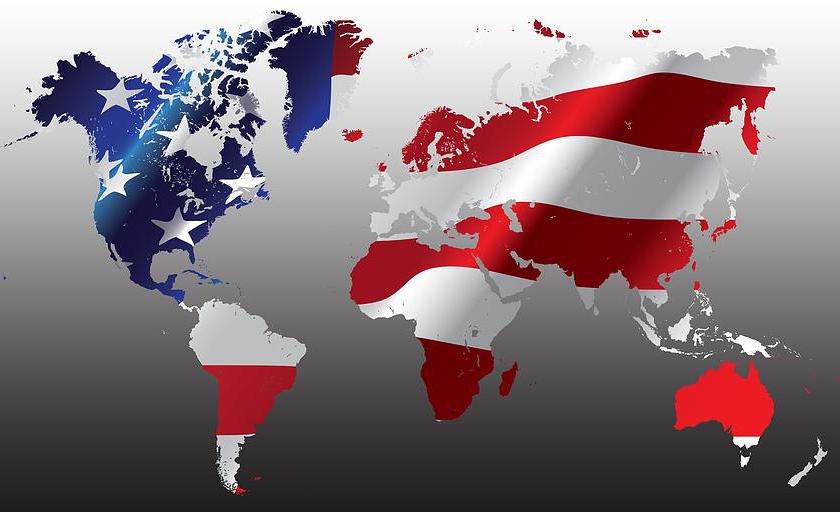
Views: 2824
GR Editor’s Note
The following article by professor Eric Waddell was first published twelve years ago by Global Research in December 2003 in the immediate wake of the invasion and occupation of Iraq by US and British forces, with a postscript added in 2007. The article provides an incisive historical perspective on America’s “long war” against humanity, which is being carried out under a fake humanitarian mandate.
Let us be under no illusions as to the intent of the US and its allies.
We are dealing with World Conquest under the disguise of a “Global War on Terrorism”.
Michel Chossudovsky, December 24, 2015
World Conquest: The United States’ Global Military Crusade (1945- )
by Prof. Eric Waddell
The United States has attacked, directly or indirectly, some 44 countries throughout the world since August 1945, a number of them many times. The avowed objective of these military interventions has been to effect “regime change”. The cloaks of “human rights” and of “democracy” were invariably evoked to justify what were unilateral and illegal acts.
The aim of the United States is to protect and reinforce national interests rather than to create a better world for all humankind. It is an “imperial grand strategy” of global dimensions designed to ensure unlimited and uninhibited access, notably to strategic resources, notably energy, and to markets. Rather than to establish a direct colonial presence, the preferred strategy is to create satellite states, and this requires constant, and often repeated, military interventions in countries around the world, irrespective of their political regime.
Democratically elected governments are as much at risk as dictatorships. In recent years, the tendency has been for such direct interference to increase since less of these countries are prepared to act as willing allies. Indeed, events of 2003 would suggest that the number of unconditional and powerful U.S. allies is now reduced to three: Great Britain, Australia and Israel. The US strategy is characterised, wherever possible, by invasion and the setting up of friendly (puppet) governments. Attention is focussed, by preference, on relatively small and weak countries, the aim being to achieve rapid victory.
Historically, this process of US domination of the World has been characterized by:
(i) direct military intervention with nuclear or conventional bombs and missiles,
(ii) direct military intervention with naval or ground forces,
(iii) indirect military intervention through command operations and
(iv) the threat of recourse to nuclear weapons.
Broadly speaking, three historical phases can be identified:
– 1945-49: The U.S.-Soviet struggle for European domination, terminating with the stabilisation of the frontier between the two blocs and the creation of NATO;
– 1950-89: The Cold War proper and, in the context of it, the emergence of the non-aligned group of nations;
– 1990 on: The post-Cold War
The first period was characterized by a significant degree of US military intervention in Europe, the second by a concern to confine the Communist bloc within its frontiers and to prevent the emergence of pro-communist regimes elsewhere in the world, and the third, focused on gaining control over the former Soviet republics and in the oil-rich Middle East. The Middle East, Southeast Asia and the Caribbean/Central America reveal themselves to be Regional Theaters of concern throughout the post-2nd World War period.
The non-negotiable defense and promotion of “the American way of life” through global military interventions took form in the closing months of the 2nd World War and it came at great cost to much of the rest of the World’s population. Although Germany capitulated in May 1945 and the United Nations was created in the following month, the U.S. nevertheless chose to use nuclear weapons to bring Japan to its feet.
The dropping of two atomic bombs, respectively on Hiroshima and Nagasaki in August of that year resulted in some 150,000 immediate deaths and tens of thousands of wounded. Such nuclear terrorism was quickly denounced by the international scientific community and no other nation has resorted to the use of such weapons of mass destruction. However the U.S.A. regularly brandishes the threat of recourse to them, while under Bush they have been reinstated as an integral part of national discourse. But the story does not end with nuclear weapons, for the U.S.A. has also, over the past half century, used chemical and biological weapons in its quest for global domination with, for example, recourse to Agent Orange in Viet Nam and blue mold, cane smut, African swine fever, etc. in Cuba. All such weapons of mass destruction are an integral part of the country’s arsenal.
In this context, the map of U.S. Military Interventions since 1945 only tells a part of the story. While the country’s global reach is apparent, the scale of military violence is not fully revealed. Up to 1,000,000 people were killed in the CIA command operation in Indonesia in1967, in what was, according to the New York Times, “one of the most savage mass slayings of modern political history”. Another 100,000 were killed in Guatemala, in the CIA-organized coup. And the map makes no mention of military interventions where the U.S. played a support (e.g. Rwanda and the Congo in the 1990s) as distinct from a lead role, or where U.S. arms were used by national military forces, as in East Timor where, in the hands of the Indonesian military, they were responsible for the death of some 200,000 people from 1967 on.
Interestingly, with regards to the international arms trade, it was President Reagan who announced, in 1981, that “The U.S. views the transfer of conventional weapons… as an essential element of its global defence posture and an indispensable component of its foreign policy.”
The U.S. Empire knows no limits. Its aim is political and military domination of the world. Under the US system of global capitalism, the demand for energy and other vital resources is unlimited.
America’s “Road Map to Empire” was not formulated by the Bush administration as some critics are suggesting. In fact, there is little that is “new” about the “Project for a New American Century”. It is just that the post-war rhetoric of human rights and social and economic development has diminished, to be replaced by the primary concern with global supremacy through military force. The imperial project was outlined in the immediate wake of the 2nd World War. It was part of the “Truman Doctrine” formulated in 1948 by George Kennan, Director of Policy and Planning at the U.S. State Department:
“We have 50 percent of the world’s wealth but only 6.3 percent of its population…. In this situation we cannot fail to be the object of envy and resentment. Our real task in the coming period is to devise a pattern of relationships which will allow us to maintain this position of disparity. We should cease to talk about the raising of living standards, human rights and democratization. The day is not far off when we are going to have to deal in straight power concepts. The less we are then hampered by idealistic slogans, the better.”
Postscript 2007
 In one sense little has changed since 2003. The next target for military intervention has already been clearly identified. It is Iran which so happens, according to the most recent US Government official energy statistics, to rank third among the world’s oil-rich nations, and to be the one with the largest increase in proven oil reserve estimates over the period 2005-2006.
In one sense little has changed since 2003. The next target for military intervention has already been clearly identified. It is Iran which so happens, according to the most recent US Government official energy statistics, to rank third among the world’s oil-rich nations, and to be the one with the largest increase in proven oil reserve estimates over the period 2005-2006.
In another sense however a new portrait is beginning to emerge, where a war-weary and increasingly vulnerable United States is moving to the creation of a Fortress North America which embraces its northern neighbour. Once again the logic is clear. Canada now ranks second, ahead of Iran and Iraq but behind Saudi Arabia, in terms of world oil reserves, thanks notably to the tar sands of Alberta. A minority government in Ottawa, dominated by Albertan interests, is consciously taking Canada into both the US energy and the military and strategic fold. In so doing, the country is joining the ranks of the United Kingdom and Australia as an unflinching US ally.
If global reach is becoming a too costly and hazardous endeavour then fortress North America becomes an increasingly attractive alternative, particularly when the minor partner is consenting and docile.
Author: Eric Waddell is a distinguished author and professor of Geography based in Quebec City.
Origins of images: Facebook, Twitter, Wikimedia, Wikipedia, Flickr, Google, Imageinjection & Pinterest.
Read our Disclaimer/Legal Statement!
Donate to Support Us
We would like to ask you to consider a small donation to help our team keep working. We accept no advertising and rely only on you, our readers, to keep us digging the truth on history, global politics and international relations.












